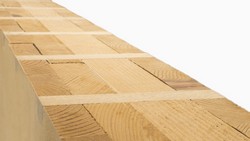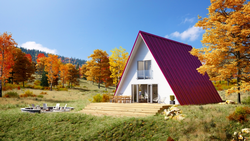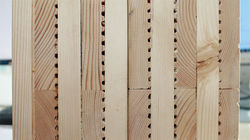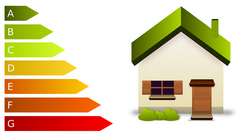An ecological alternative to CLT buildings
Cross-laminated timber is a fantastic construction material and it offers great flexibility. But it comes with a problem: glue.
Glue is used to keep the wooden layers together... and glue is a chemical compound you might not want in your walls.
What if there was an alternative to CLT that is made 100% of natural wood?
It turns out there is...


































